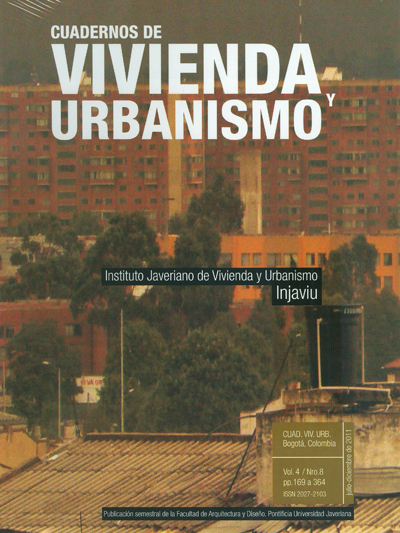Abstract
Climate change generated by the expansion of the urban area affects the temperature rise by the thermal properties of the materials of construction. The shortage of green areas (which increases impervious surfaces) causes climatic imbalances that diminish quality within the housing. In this sense, this paper aims to estimate and compare the thermal attenuation and CO2 capture in priority interest housing located in Altos de Cazucá, who used eco ceilings as vegetable crops. The experimental design required technological developments such as an irrigation system that optimizes the rushing water and separate containers for the substrate and plants. Crops are divided into: 1) lettuce and radish, 2) green onions, coriander and lettuce, and 3) Spinach and parsley. Control housing without eco ceiling was also studied. Then, thermal variables were quantified within the housing and carbon sequestration. The results are a thermal attenuation of the roof (4 ° C) and atmosphere (3 ° C), increasing the relative humidity of 10% and a total of 16.1 kg CO2 captured, 38.6 kg and 8, 3 kg annually.This journal is registered under a Creative Commons Attribution 4.0 International Public License. Thus, this work may be reproduced, distributed, and publicly shared in digital format, as long as the names of the authors and Pontificia Universidad Javeriana are acknowledged. Others are allowed to quote, adapt, transform, auto-archive, republish, and create based on this material, for any purpose (even commercial ones), provided the authorship is duly acknowledged, a link to the original work is provided, and it is specified if changes have been made. Pontificia Universidad Javeriana does not hold the rights of published works and the authors are solely responsible for the contents of their works; they keep the moral, intellectual, privacy, and publicity rights.
Approving the intervention of the work (review, copy-editing, translation, layout) and the following outreach, are granted through an use license and not through an assignment of rights. This means the journal and Pontificia Universidad Javeriana cannot be held responsible for any ethical malpractice by the authors. As a consequence of the protection granted by the use license, the journal is not required to publish recantations or modify information already published, unless the errata stems from the editorial management process. Publishing contents in this journal does not generate royalties for contributors.


